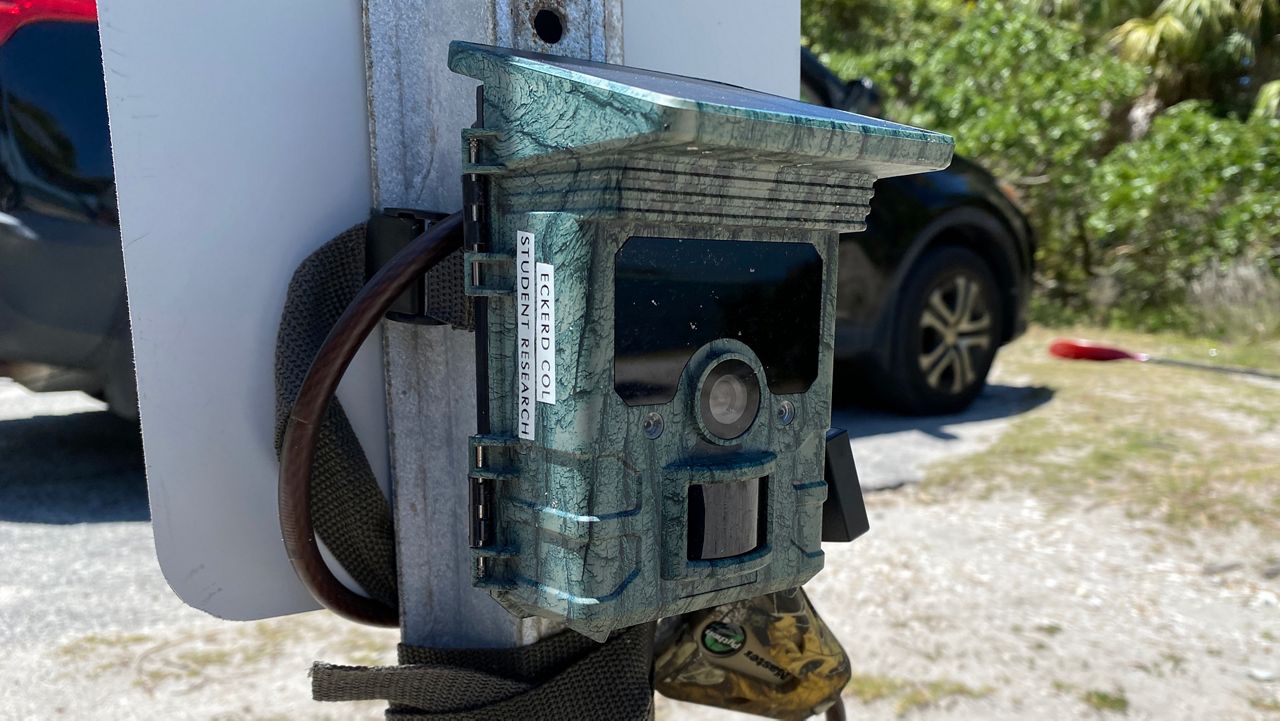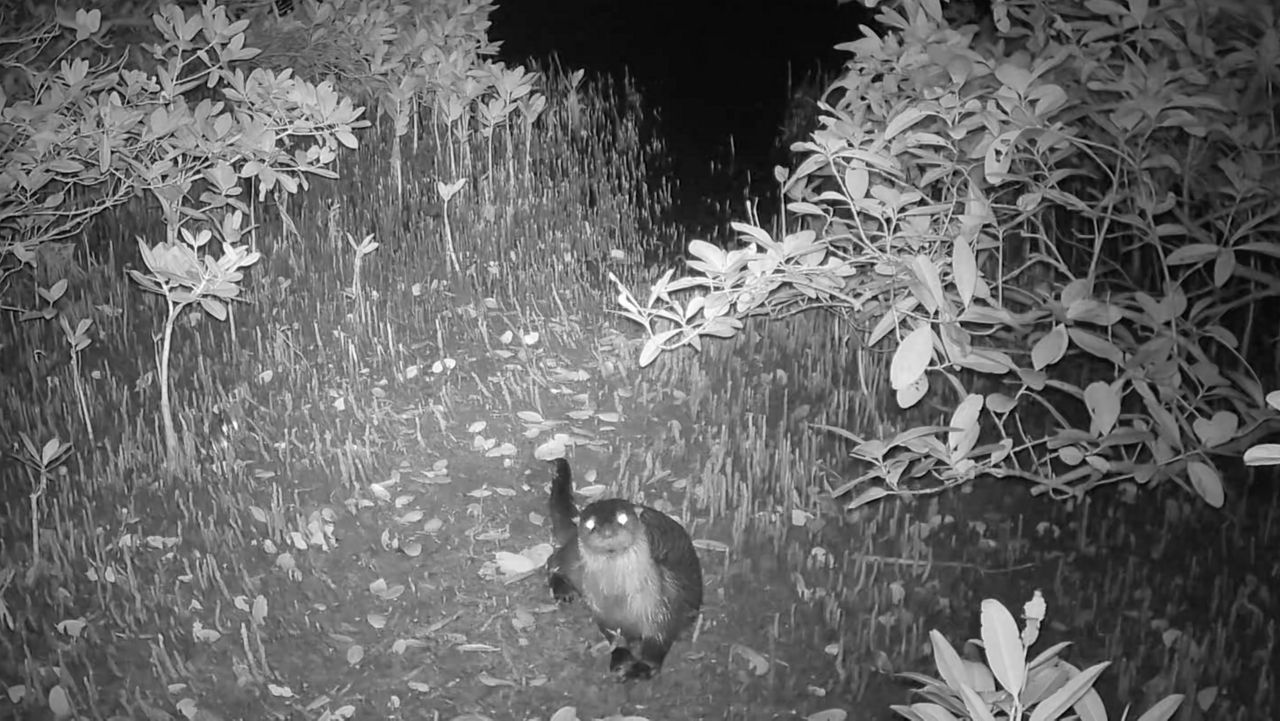PINELLAS COUNTY, Fla. – Eckerd College professors had 20 camera traps installed at Fort De Soto to study animal behavior at night on the protected natural park located in densely populated Pinellas County.
What You Need To Know
- Motion sensor cameras are operational from sunset to sunrise.
- Professors said it's a really good project for students to get some research experience
- Tampa Bay Estuary Program awarded a $5K grant to fund the study for one year
"The point of the whole project is to see what types of animals exist in areas like this where it's a park refuge," Asst. Prof. of Animal Studies Tim Bransford told Spectrum News. "Also, to provide some form of education to the general public."
Six of the cameras are located in areas frequented by the public and have signs with QR codes. Visitors who scan the code with their phone will be taken to a website showing the animals that have crossed the camera's path.

"They can see the videos and photos from those cameras as we curate them and upload them," said Bransford. "It's a new project still. So, there's not a lot up now but there will be."
Bransford said because the data is available to the public, the professors were awarded a $5,000 grant from the Tampa Bay Estuary Program to fund the study for one year. "This was Tim's idea. I do work studying seabirds at Ft. De Soto," Prof. of Environmental Science and Biology Beth Forys said. "So, of course I was interested in what mammals and birds might be using Ft. De Soto at night. So, Tim said, 'let's partner up, let's try to get a grant.'"
Forys said some of the more interesting animals caught on video so far include river otters in the mangroves and a great blue heron that landed on the dog beach in the middle of the night when they're usually not active.

(photo courtesy Eckerd College)
"We were very curious to see what animals are using the beach that the dogs use during the day," she said. "We've gotten a lot of raccoons, a lot of opossums, maybe an armadillo or two."
Forys said students are working to get the images from all 20 cameras on the website and expects it to be up and running in less than two months. So far, they've gotten 300 hits from the six cameras with QR codes, according to Forys.
"We can see that each one has been accessed many, many times already," she said. "Which really surprised me."
Bransford said it's a really good project for students to get some research experience.
"They come out and help us check the SD cards or analyze the data," he said. "This is a great education opportunity both for teaching college students here at Eckerd to go out to these places and understand the importance of them but also to provide an opportunity for the community."
The motion sensor cameras are operational from sunset to sunrise while the park is closed to visitors.



